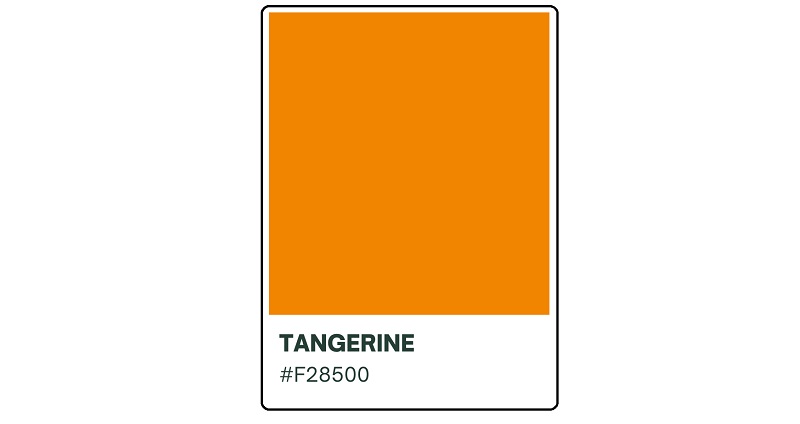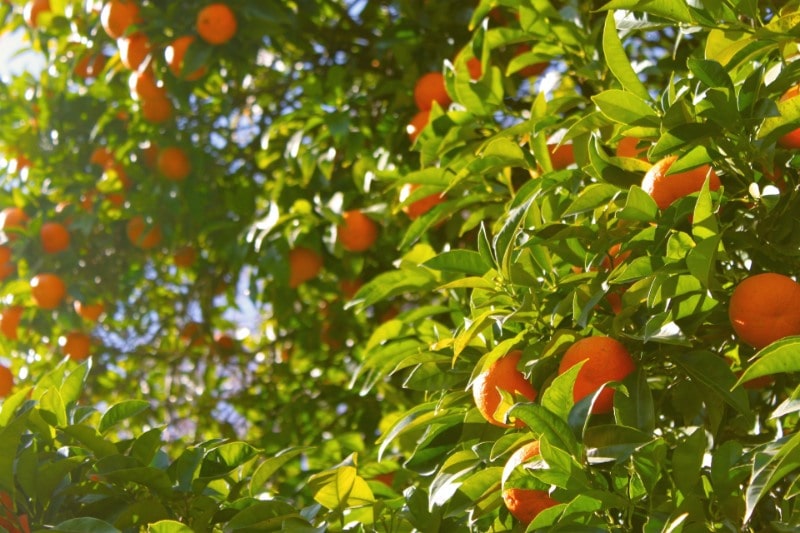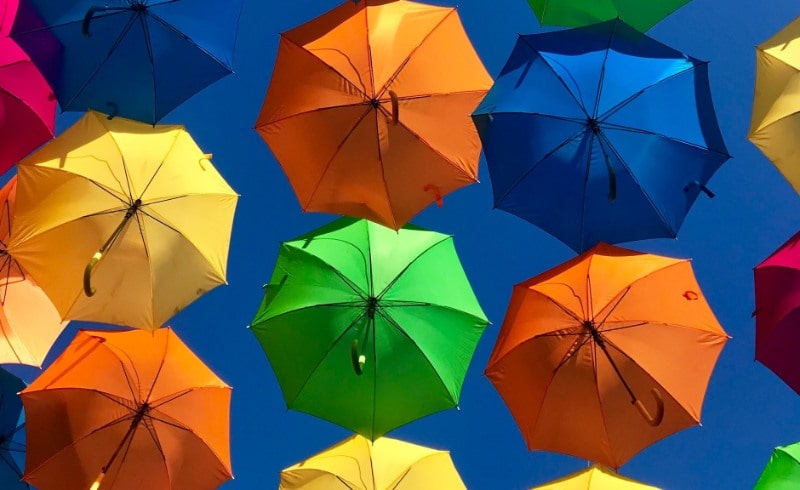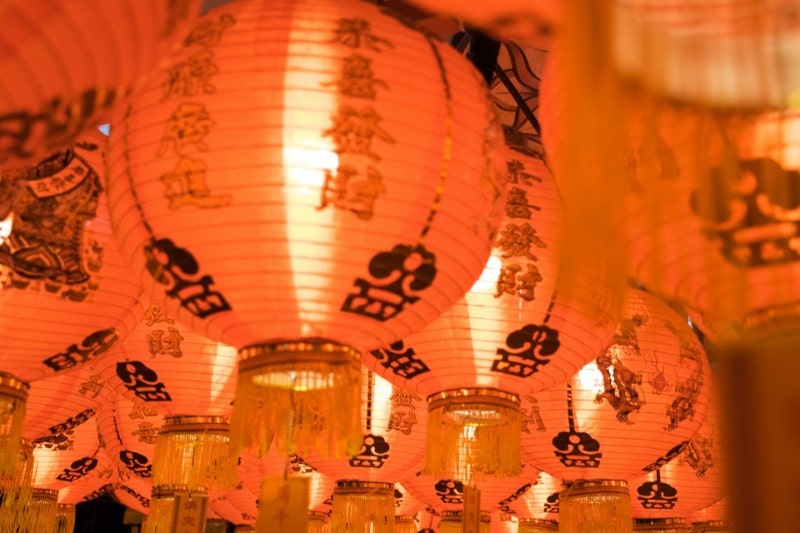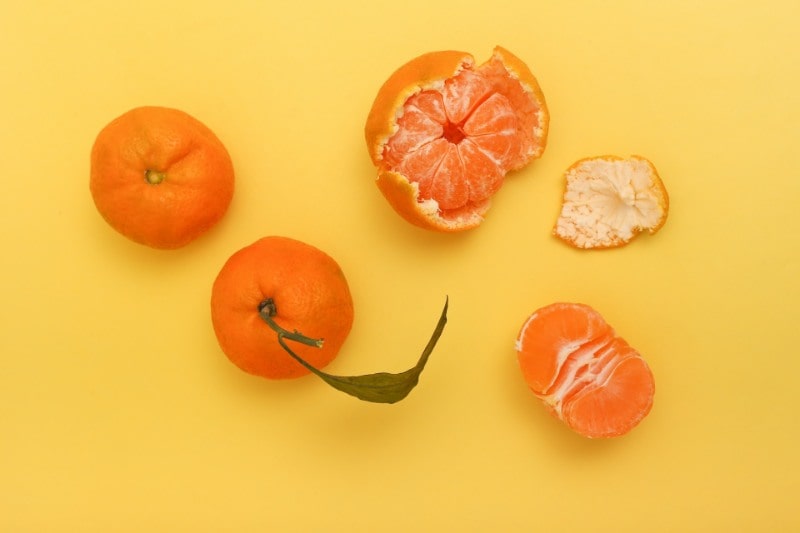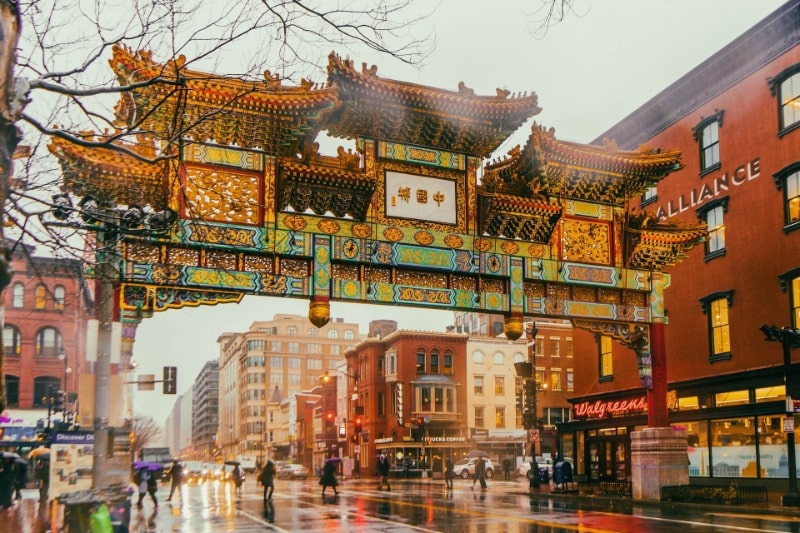Last Updated on September 28, 2023
Just like the juicy, zesty fruit of the same name, tangerine is a bright hue that radiates energy and enthusiasm. Nestled between the warmth of orange and the vibrancy of red, it evokes warmth, creativity, and positivity.
Whether used as a bold focal point or a subtle accent, tangerine effortlessly commands attention and adds a dynamic flair to any project. From web interfaces, apps, to visual compositions, it’s a versatile and invigorating choice for infusing creations with energy.
This article will delve into the history, meaning, and symbolism of tangerine orange. Read on as we journey through the color’s origin from the ancient to contemporary times.
Introduction To The Color Tangerine
This exciting, eye-catching color is created by blending various shades of red and orange. To achieve this, red and orange pigments or dyes are combined in precise proportions. The specific shade of tangerine (with the hexadecimal code #F28500) can vary depending on the exact ratios of these primary colors used in the mixture.
In the world of digital design and printing, tangerine can also be achieved through the RGB (Red, Green, Blue) color model by mixing red and green light at appropriate levels. This model is commonly used for displays and screens. The goal is to find the perfect balance between red and orange to capture the lively essence of the tangerine color.
Tangerine orange, also known as tangerine tango, was named Pantone’s Color of the Year in 2012.
Similar Colors To Tangerine
You’ll find an array of vibrant and warm hues that share its energetic and captivating qualities with tangerine. One such color is coral, which blends the vivacity of orange with a hint of pink, creating a harmonious and inviting shade. Another great example is mandarin, a tone that echoes tangerine with a slightly deeper, more intense appearance.
Apricot is yet another delightful option, offering a softer, more muted take. It exudes a gentle warmth that’s perfect for evoking a welcoming and cozy atmosphere. Additionally, persimmon and vermilion are bold choices that, while leaning more towards red, still embody the same fiery spirit. These similar colors provide you with a palette of options to play with.
History and Origin of Tangerine
The color first emerged in the late 19th and early 20th centuries, particularly within the Art Nouveau movement. During this period, tangerine gained popularity for its vibrant and energetic hues.
But even before it garnered mainstream recognition, tangerine already enjoyed immense cultural significance. In ancient civilizations, such as Egypt and Persia, oranges were highly valued for their rarity. These colors were seen as symbols of wealth and prosperity. Orange’s association with opulence and abundance are reflected in tangerine.
Tangerine orange has also made its mark in the world of fashion. The color has become a popular choice for garments and accessories alike. Its warm tones can add a touch of excitement to outfits, making it a favorite among high-end fashion designers.
In literature and film, tangerine has been used to convey a sense of vitality. It often represents characters or moments that are full of passion.
Furthermore, tangerine orange has found its place in branding. Companies have utilized this color to evoke feelings of warmth, friendliness, and creativity. Its bold hues make it a powerful tool for grabbing customers’ attention and endearing them to your brand.
Tangerine’s Influence in Art and Design
Artists and designers all over the world have been fascinated by tangerine’s colorful tones and emotional effects, using it in their works to elicit a range of feelings.
This shade of orange has had a significant impact on the world of painting, with renowned artists like Vincent van Gogh, Henri Rousseau, and Pierre-Auguste Renoir incorporating it into their masterpieces. Its warm and cheerful nature adds a dynamic element to any artwork, helping to enhance the overall visual experience.
But tangerine’s popularity in the art world isn’t limited to its inclusion in the palettes of renowned painters. As already hinted, the color has been integrated into various art movements throughout history.
In the late 19th and early 20th centuries, tangerine became a defining color of the Art Nouveau movement. The color was mostly known for its organic forms and vibrant color palettes. Additionally, in the 1960s and 70s, tangerine orange gained popularity as a symbol of the bold and psychedelic design style.
Aside from its influence on art, tangerine orange has also played a crucial role in graphic design. The color’s zesty nature makes it a popular choice for graphic designers looking to create eye-catching and stimulating visuals. It’s effective at conveying a sense of playfulness and creativity, too. That makes it perfect for designs that aim to stand out and make a lasting impression.
Tangerine color schemes have also become increasingly popular in various design disciplines, from interior design to graphic design. Tangerine in logo design can help a brand stand out and convey a sense of enthusiasm. Similarly, tangerine in packaging materials can make products more appealing, thereby stimulating interest.
In web design, tangerine is often used to create a sense of warmth and energy. The color can be incorporated into buttons, banners, and backgrounds to create a visually stunning and engaging experience. The versatility of tangerine allows designers to experiment with different shades and combinations, creating unique and captivating designs.
Beyond art and graphic design, tangerine has also found its place in contemporary fashion and interior design. In fashion, tangerine is known to exude a sense of energy. You’ll mostly stumble upon this hue in sports jerseys and casual wear. And in interior design, this shade of orange can serve as an accent color to inject warmth into any space.
Symbolism and Cultural Significance of Tangerine
The symbolism of tangerine orange transcends cultural boundaries. The color has held significant meaning in various cultures around the world. This captivating color is deeply rooted in numerous beliefs and traditions. It also carries many spiritual meanings that may vary from one religion to another.
In Asian cultures, particularly in China, tangerine is associated with good luck and prosperity. It’s a common practice in such cultures to exchange tangerine fruits or decorate homes with them during Chinese New Year as a gesture of a prosperous year ahead. Similarly, in many Western cultures, the tangerine color is symbolic of warmth, vitality, and rejuvenation.
Tangerine also holds a significant place in superstitions and folklore. In some countries, it’s believed that carrying a tangerine fruit can protect against evil spirits and negative energies. In other cultures, the fruit is seen as a symbol of fertility and abundance.
The pigment has also featured in various festivals and celebrations around the world. In India, the festival of Holi, known as the ‘Festival of Colors,’ involves participants throwing vibrant powders, including tangerine-colored powders, at each other. This symbolizes the arrival of spring and the triumph of good over evil.
There are many other cultures where tangerine holds vast significance. In almost all cases, this color represents good luck, prosperity, warmth, and vitality. It has become an integral part of rituals and festivals, showcasing its universal appeal.
Tangerine’s Psychological Effects
Studies have shown that shades of orange may have significant psychological effects on individuals. Tangerine, in particular, has the power to impact mood and elicit varied emotional associations.
The color can stimulate creativity and inspire individuals to think outside the box. Its warm and brilliant tones may also exert a positive influence on perception, making objects appear more dynamic.
Tangerine carries additional symbolic meanings that may further enhance its psychological impact. This elegant shade of orange is associated with vitality, rejuvenation, and enthusiasm. No wonder it’s an excellent choice for designs aiming to convey positive vibes.
As already mentioned, tangerine is often linked to good luck and prosperity in some cultures. This adds an extra layer of positive meaning to its psychological effects.
When used in design, the psychological effects of tangerine can be harnessed to create a specific ambiance or convey a particular message. Whether it’s in graphic design, fashion, or interior design, this color has the ability to create stunning visuals while eliciting different emotional responses. Its versatility allows it to be used in various contexts, from playful and energetic designs to more sophisticated ones.
Popular Uses of The Tangerine Color
This bright, happy hue has carved a prominent niche for itself in the world of fashion and interior design. Its brilliant hues makes it a perfect choice for those seeking to make a bold statement.
Designers in the fashion industry love tangerine for its playful, exhilarating spirit. This animated hue finds its place on garments, accessories, and even footwear, igniting a vivacious spark within every ensemble. With its magnetic charm, tangerine effortlessly commands attention, emanating a sense of self-assuredness and charisma.
When it comes to interior design, tangerine becomes a transformative force. From accent walls that exude vibrancy to textiles that radiate warmth, this underlying orange tone breathes life into even the most mundane living spaces.
You’ll encounter its lively presence in the form of throw pillows that invite comfort, curtains that dance with zest, and upholstery fabrics that speak of elegance. Furthermore, tangerine stands as a preferred choice for furniture pieces, infusing rooms with a dynamic touch, ensuring that every corner resonates with a captivating vitality.
Conclusion
It doesn’t matter whether it’s used in paintings, sculptures, fashion designs, or interior spaces. Tangerine has earned a reputation for its ability to inject a sense of excitement into any setting. Its vibrant qualities make it a standout choice where the primary theme is to create a lasting visual impression.


